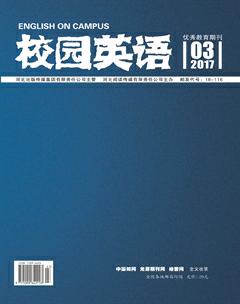The Impact of Design Features of Language on Foreign Language Learning
【Abstract】According to Charles F. Hockett (1916-2000), an American linguistic anthropologist, there are fifteen design features of language. They are interchangeability, feedback, specialization, semanticity, arbitrariness, discreteness, displacement, productivity, grammatical patterning, idioms, cultural transmission, duality, prevarication, relexiveness, and learnability respectively. In the essay, the notion that a foreign language can be learned and mastered in a short period of time is debated based on human languages arbitrariness, productivity, displacement, and duality.
【Key words】design features; foreign language learning
Human language is distinctive from languages used by other species and advantageous over animal “language”, complicated and flexible, and also capable of creating new meanings. There are some design features for language developed by Hockett. Among them, arbitrariness, productivity, displacement, and duality are explored in light of foreign language learning.
Arbitrariness is referred to the fact that the forms of linguistic signs bear no natural relationship to their meaning. For example, we can find no way to explain why a desk is called /desk/ and a 桌子(zhuo zi) in Chinese. It, in a sense, constitutes a fairly big challenge for a foreign language learner to have a good command of the vocabulary of the target language. Learners get panic when they finally understand the word “water” indeed indicates something that we drink everyday. Take Japanese and Chinese for instance, “丈夫”in Chinese means the “husband”, and “strong” or “everything is ok” instead; another striking case is that the character “娘” means “mother” in Chinese and the opposite, “daughter” in Japanese. Thus the lack of natural relationship between signifier and signified is the biggest problem for a foreign language learner. And this problem can less predominant in studying hieroglyph, but hieroglyph is no longer in use up today.
Duality is another distinct feature of human language that refers to the property of having levels of structures, units of the primary level being composed of elements of the secondary level and each level having its own principals of organization. In human language, the elements of the primary level are sounds and the words or the written forms of the sounds are the elements of the secondary level. The elements of the oral language are sounds which do not convey meaning in themselves, and they do conduct it only when they are combined with the primary elements. Many animals special calls and even the traffic lights and sign language do convey corresponding meanings. But their primary units cannot be further divided into elements or secondary units. So both the animal calls and the traffic lights do not have the feature of duality. Here comes the demand that a foreign language learner not only has to grasp the sounds or the pronunciation but the word or the spelling. Most ABCs (America Born Chinese) are a very good example to illustrate this. They are probably exposed to a Chinese background, capable of communicating effectively with the Chinese native speakers in oral Chinese; however, when it comes to writing or reading the written Chinese characters, they are totally in despair.
Concerning the feature of duality discussed above, one fact cannot be ignored that a large number of different units can formed out of a small number of elements, for instance, tens of thousands of words out of a small set of sounds, from which astronomical number of possible phrases, sentences, and texts are expected to pour out. Then the productivity or the creativity of language rises to the occasion. Because of productivity, the user is able to create an infinite set of sentences by combining the basic linguistic units. But the problem is how a learner can produce an infinite set of sentences with a finite set of linguistic units and assure of efficiency and effectiveness of communication. All of this demands time.
There is another design feature determines the need of time in learning and mastering a foreign language, that is, displacement. It means that human languages enable their users to symbolize objects, events and concepts which are not present at the moment of communication. Displacement benefits human beings by giving them the power to handle generalizations and abstractions while it also presents a great challenge to a language learner that he/ she is required the ability to employ what he/she has learned to communicate about some unfamiliar or even unknown or abstract things.
From all discussed above, the hastily made and unscientific notion that a foreign language can be learned and mastered in a short period of time is greatly challenged and turns out to be totally wrong. Learning and mastering a foreign language does demand highly on time and effort devotion.
References:
[1]Hockett,Charles F.“The Problem of Universals in Language.”(1966).Retrieved from
作者簡介:卢云川(1979.9-),女,汉族,云南姚安人,硕士,讲师,研究方向:英语语言文学。

